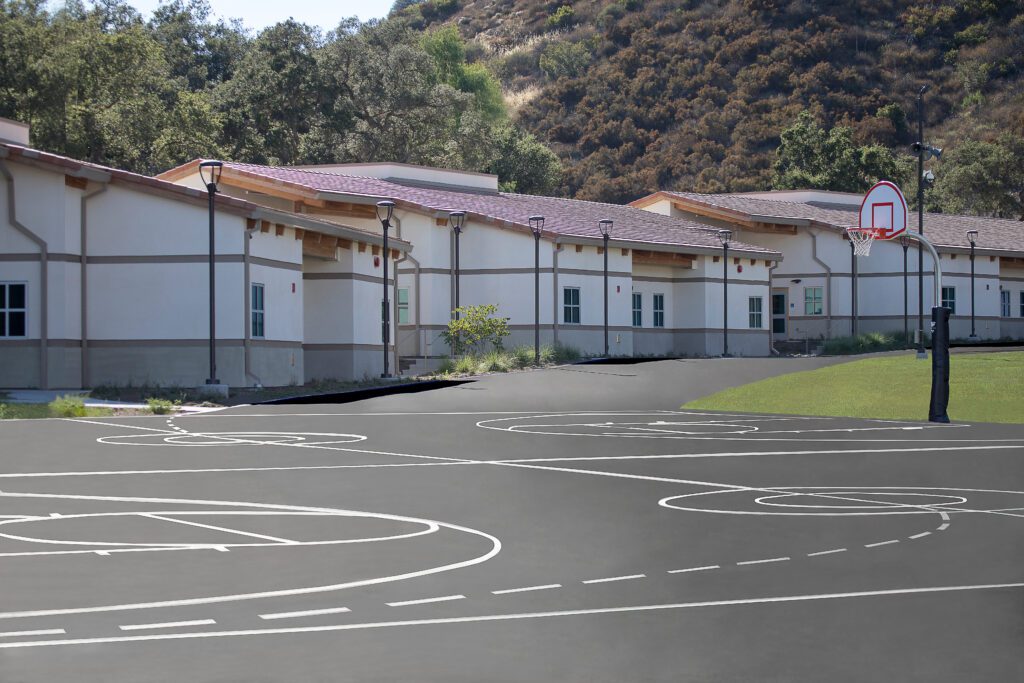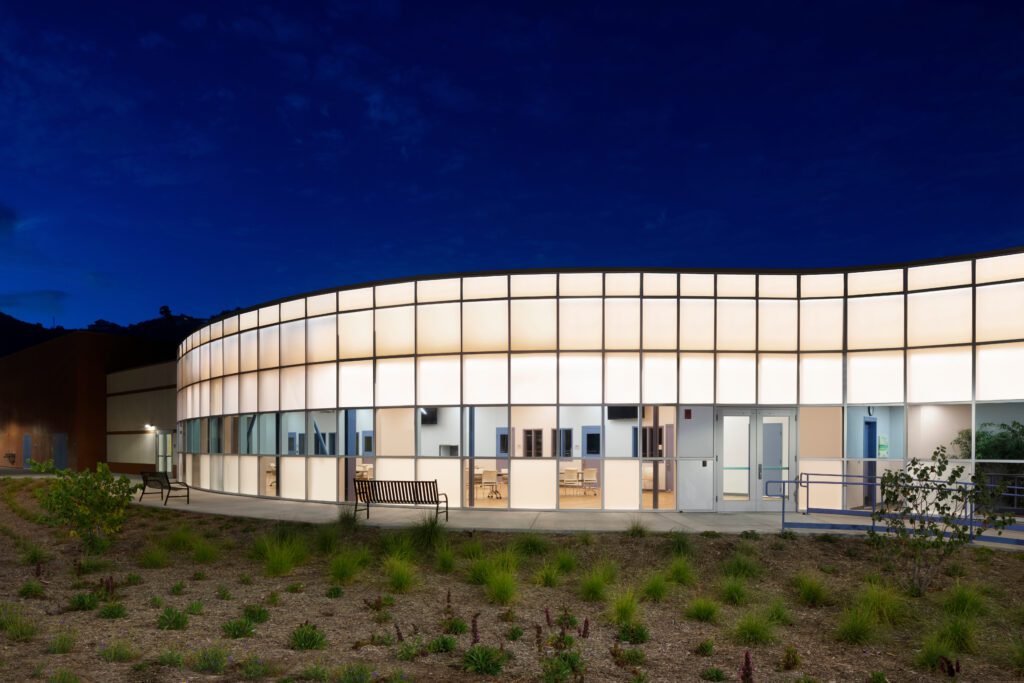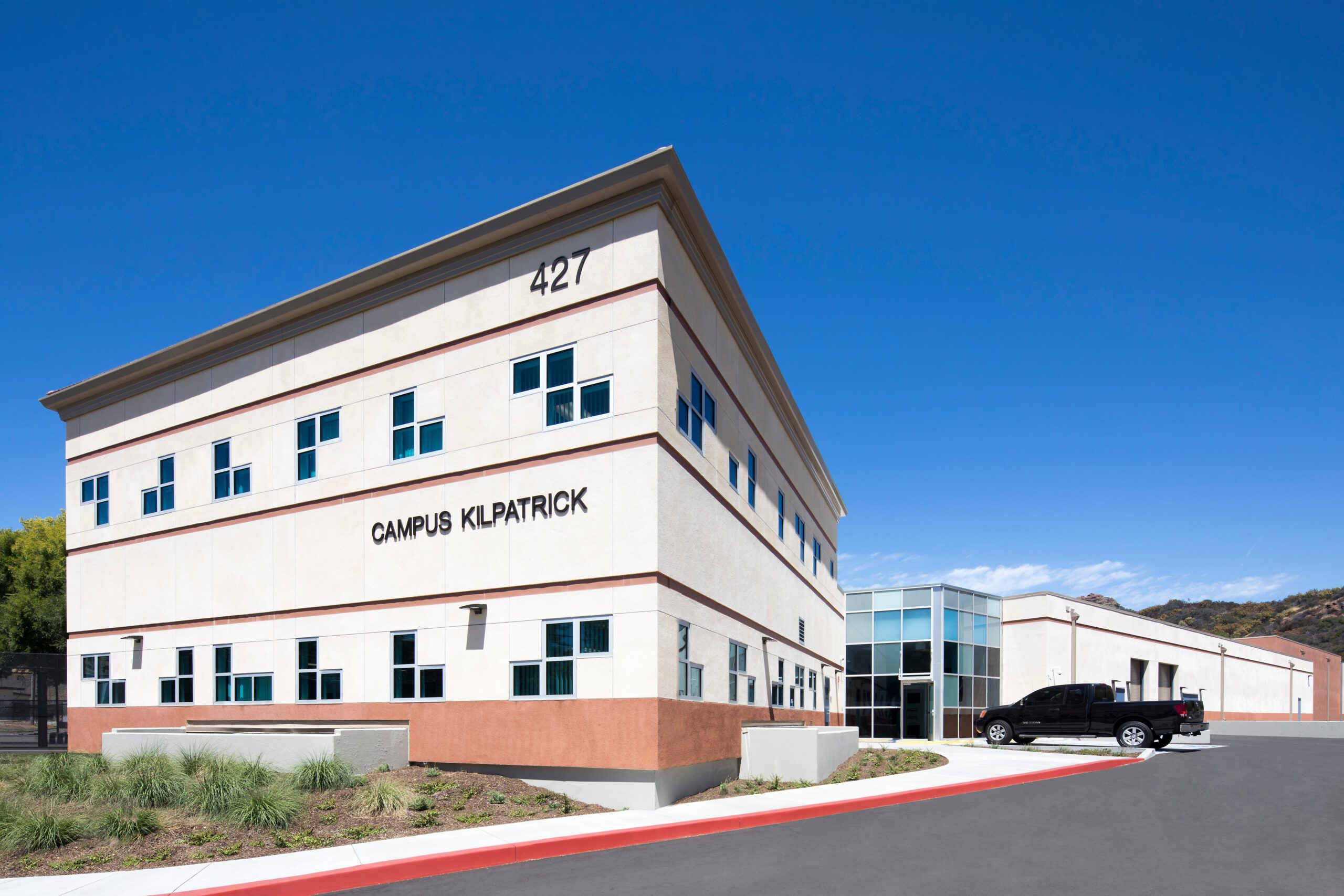The “LA Model” of juvenile rehabilitation has a new home in the hills of Malibu at Campus Kilpatrick, a new design-build facility conceived with our partners at DLR Group and built by Bernards. The former Camp Kilpatrick was built on the correctional idea of command and control, leading to numerous problems within the detention hall and an incline in delinquency and recidivism. The new facility focuses instead on small group supervision, positive reinforcement and a well trained staff of probation officers and psychologists. All of these forces work together to help make the “LA Model” successful at reducing juvenile crime. Campus Kilpatrick is a large scale effort to put this new model into place for those minors who require more attention and supervision than the majority who can live in lower security accommodations. The new buildings and supportive assistance will be proved out over the coming years, with what the county hopes will be measurable, positive results in part from the enlivened environment itself.
The campus houses 120 people, but averages around 80 residents in five duplex cottages that sleep up to 24 minors. In addition to offices and conference rooms for the staff, there are nursing stations, medical observation units, and mental health facilities. These structures ring a courtyard with community areas including a pool, library, basketball courts, laundry rooms, a dining hall and general recreation areas. The heart of the campus lives in the commons which is used for dining and visitations as well as a culinary arts program. In this inviting environment, the stresses and external provocations that exacerbate bad behavior give way to a nurturing and supportive environment conducive to education and growth as well as developing tools to deal with traumatic events and behavioral issues.

The buildings on campus total approximately 68,000 square feet on 7.55 acres, replacing a center that was 50 years old. The initial phase of construction included a demolition of the old structures to make way for a more open and enriching atmosphere. The LEED Silver designed building delivers the feeling of a chalet that is expressed throughout the campus, making use of exposed mass timber structural elements, which were mixed with steel frames. The optimization of the structural elements allowed the design to reimagine the narrative of this correctional institution, creating an inviting environment maximizing transparency with liberal use of glass, and weaving natural materials into the interior spaces. The commons have a faceted blue glass wall system that allows sunlight to pour in with sweeping views into and out of the building while adding an element of design fun in this jewel-box. The entrance integrating the reception desk, waiting room and command post is nestled between two buildings, and although it affords a view of the entire campus, it functions as an anti-panopticon, with glass sides that allow people both inside and out of the facility the ability to keep an eye on the authority figures.
Additionally, the setting leant itself to open areas with calming views, and an opportunity to focus on native plants and creative landscape. Included in the civil considerations were planter boxes for the culinary arts program where food and herbs will be grown as a part of the complete education program.
The team worked together to maximize efficiencies and deliver an outstanding product while considering costs, as this was funded with tax payer dollars. DLR Group and Bernards worked hand in hand with KPFF civil and structural to look for ways to achieve design goals intelligently, which lead to a very collaborative environment. This team effort was successful in part because everyone knew the importance of the project and how many lives could be effected by a thoughtful, quality environment to nurture children and enable them to thrive.



